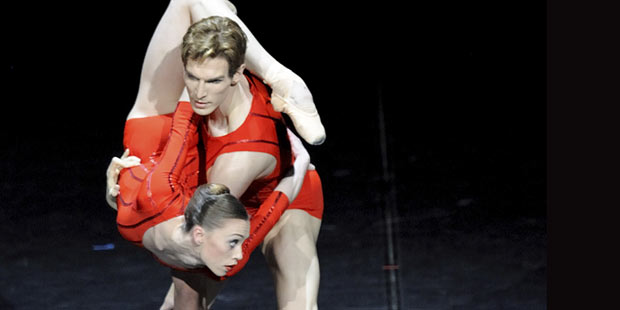
Stuttgart Ballet
Made in Germany bill:
Hommage à Bolshoi, Fancy Goods, Ssss…, Little Monsters, Le Grand Pas de Deux, Initials R.B.M.E (3rd movement), Romeo and Juliet pdd, Lady of the Camellias pdd, FanFare LX, Affi, Mono Lisa
London, Sadler’s Wells
18 November 2013
www.stuttgart-ballet.de
Stuttgart Ballet’s programme of 13 works made for the company is a combination of a revue and a benefit gala, showcasing in-house choreographers and dancers of all ages. It’s bound to have more resonance for audiences who know the company well, and who can enjoy watching favourite and up-and-coming dancers in unusual contexts. For unfamiliar spectators, the ‘tasting menu’ introduction to Stuttgart Ballet’s repertoire proved somewhat indigestible.
There are three courses with two intervals. The starter is a mostly kitsch homage to ballet; in the middle are four extracts from the company’s 20th century repertoire; finally come works created this century on the company’s dancers. Men feature more prominently than women. Reid Anderson, artistic director since 1996, seems to have acquired the finest male talent available outside Russia – including dancers who trained at the Royal Ballet School. Most of the (male) choreographers were given their first chances through Stuttgart’s Noverre Society, which John Cranko nurtured from the 1960s on as a cradle for creators.

© Stuttgart Ballet. (Click image for larger version)
Cranko, Stuttgart Ballet’s much-loved director until his untimely death in 1973, was represented by three works. The programme opened with his 1964 pas de deux, Hommage à Bolshoi, in which he showed that he and his Stuttgart dancers could rival the Russians in flamboyant lifts to Glazunov’s music. The central section featured the Balcony pas de deux from his Romeo and Juliet (1962), danced by two youngsters, Hyo-Jung Kang from Korea and Alexander Jones from the UK, both promoted to principal after their debuts in the roles in 2011. Cranko’s influence on MacMillan’s Romeo and Juliet, three years later, was evident.
Best of all was the third movement from Cranko’s 1972 ballet, Initials R.B.M.E., named after the dancers who were his closest friends: Richard Cragun, Birgit Keil, Marcia Haydée and Egon Madsen. Each featured in a movement of Brahms’ Second Concerto, accompanied by a supporting group. Maria Eichwald took Haydée’s role, partnered by Evan McKie, ending with a chain of backwards bourrées, a Haydée speciality. The airy pas de deux, echoed by corps couples, never descended into acrobatic display.

Christian Spuck, ex-resident choreographer of the Stuttgart company, contributed a parody of many a pyrotechnic Grand Pas de Deux (and a quote from Giselle Act II), hammily performed by Alicia Amatriain and Jason Reilly, with a handbag and plaster cow as props. The Trocks are funnier. Both dancers were in earnest in Izak Galili’s Mono Lisa, a glib homage to William Forsythe’s In the Middle: splayed extensions, abusive grapplings, stompings away to hideous industrial noises. Douglas Lee’s Fanfare LX, to Michael Nyman film music, was also school-of-Forsythe, though mercifully less circus-freaky than Galili’s extravaganza.
It’s evident that many of these show-off pas de deux and solos were made for galas – or in the case of Demis Volpi’s Little Monsters, for a competition: the Erik Bruhn Prize in 2011. To Elvis Presley songs, Elisa Badenes and Daniel Camargo, both since promoted to principals, neatly sent up would-be sexy duets in which a needy girl clings to her partner, only to be flung away in rejection. Three songs by Johnny Cash were used for a gala solo, Affi, created by Marco Goecke, Stuttgart’s resident choreographer, for principal dancer Marijn Rademaker, and performed by many others. Yet again a handsome male torso was on display, moodily lit in a danced soliloquy that had little to do with the music. Rademaker turned his back on the audience for most of the solo, gesticulated, anguished in angles and ended up whistling a lullaby. Affi was presumably intended to be taken more seriously than Goecke’s Fancy Goods, in which Friedemann Vogel behaved like a roguish stripper – a homage to Roland Petit’s wife, Zizi Jeanmaire, and her ostrich feather fan?
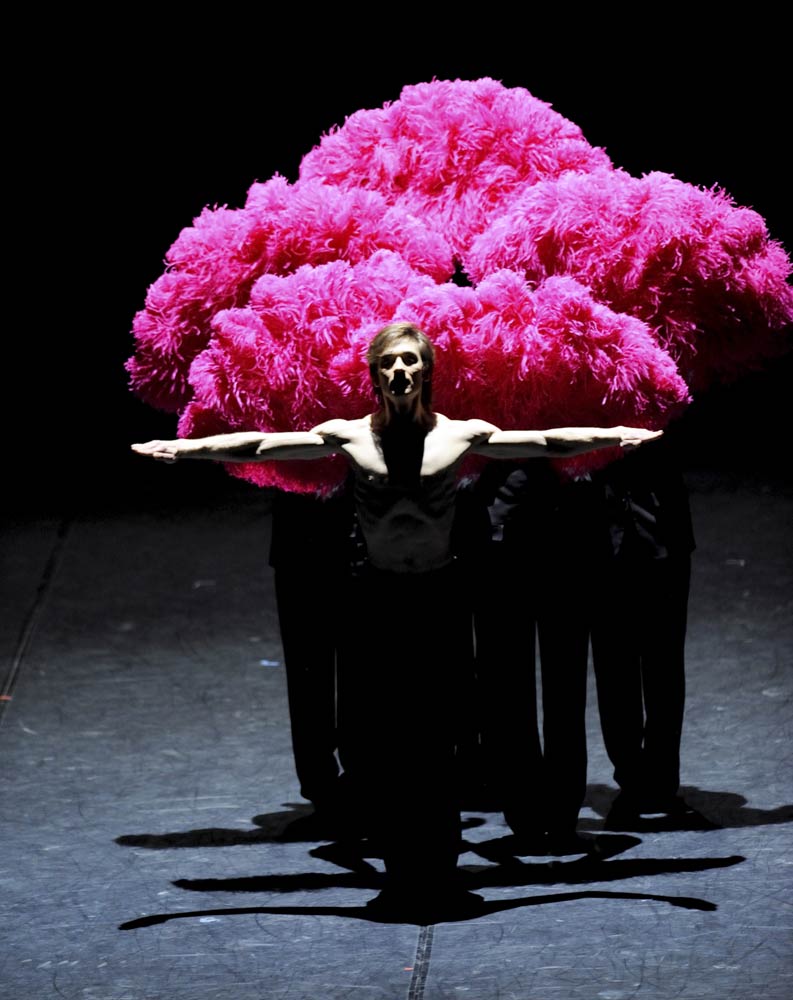
© Stuttgart Ballet. (Click image for larger version)
Though it was a pleasure to see Stuttgart’s senior ballerina, Sue Jin Kang, dancing dramatically in black velvet with blond Rademaker, their extracted pas de deux from John Neumeier’s The Lady of the Camellias (1978) made little sense out of context and absolutely no sense musically. Poor Chopin fared better in Edward Clug’s choreography to a Nocturne from his ballet Ssss… (2012). Pablo von Sternenfels, still in the corps, danced the solo as if he were an instrument being played by Chopin’s music – both piano and pianist. He’s a dancer to watch. Reid Anderson can certainly pick dancers and choreographers in the making. We really do need to see Stuttgart Ballet more often in order to keep up with his discoveries.







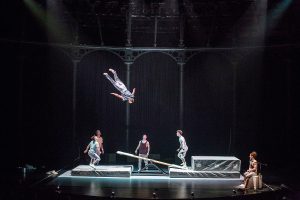
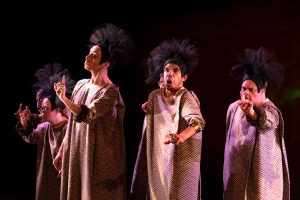

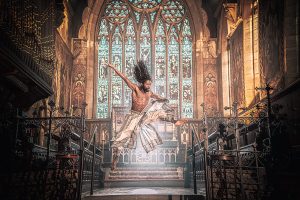

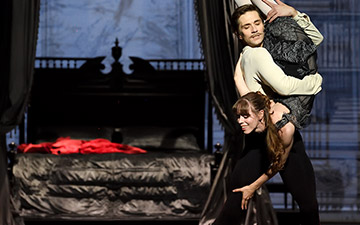
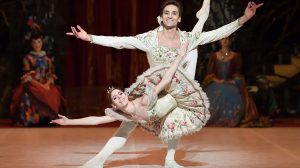
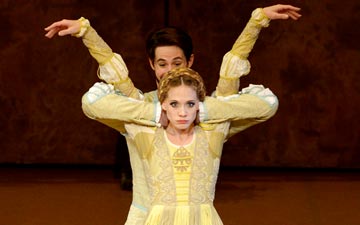
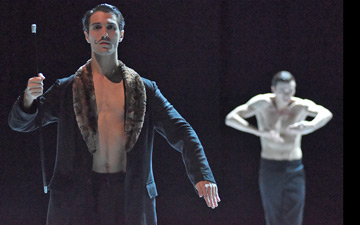
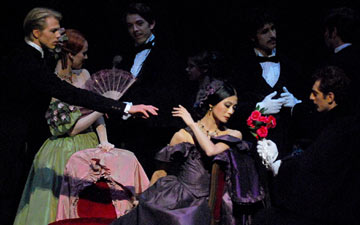
You must be logged in to post a comment.